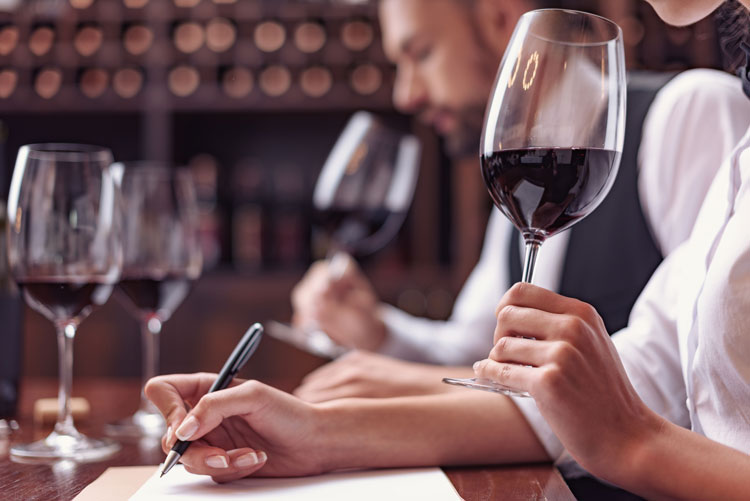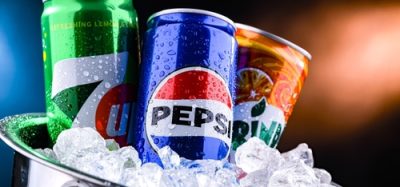An interview with a Master Sommelier
- Like
- Digg
- Del
- Tumblr
- VKontakte
- Buffer
- Love This
- Odnoklassniki
- Meneame
- Blogger
- Amazon
- Yahoo Mail
- Gmail
- AOL
- Newsvine
- HackerNews
- Evernote
- MySpace
- Mail.ru
- Viadeo
- Line
- Comments
- Yummly
- SMS
- Viber
- Telegram
- Subscribe
- Skype
- Facebook Messenger
- Kakao
- LiveJournal
- Yammer
- Edgar
- Fintel
- Mix
- Instapaper
- Copy Link
Posted: 5 November 2020 | Jaclyn Bowen | No comments yet
New Food Advisory Board member, Jaclyn Bowen, speaks to Brett Zimmerman, a Master Sommelier, about his efforts to champion diversity and sustainability in alcoholic beverage production, and the trends he’s witnessing in the wake of Covid.


The societal awakening taking place on the heels of the Black Lives Matter movement isn’t just transforming long-standing personal, regulatory and marketing precedence, it’s also revolutionising the food and beverage industry. The Court of Master Sommeliers is rich in history, legacy and tradition, but arguably has room for modernisation when it comes to diversity. And Brett Zimmerman, Sustainable Somm, Master Sommelier and wine store owner, has his eyes set on changing opinions and what America drinks, one glass at a time.
How does one become a Master Sommelier?
When a candidate has successfully passed all four examinations – 1) Introductory Sommelier Course and Exam, 2) Certified Sommelier Exam, 3) Advanced Sommelier Course and Exam, and 4) Master Sommelier Diploma Exams – they earn the Master Sommelier diploma and title. It may sound simple, but it requires a lot of sacrifices to pass this rigorous examination.


Brett Zimmerman, Sustainable Somm, Master Sommelier and wine store owner.
A tremendous amount of time must be devoted to studying, which may impinge on life and other work. This programme is rooted in mentorship from those who have passed and can provide insight for methods that help along the way.
I was fortunate to have worked at Charlie Trotter’s with sommeliers such as Brian Cronin and Robert Houde. At the time, Trotter’s was one of the few restaurants that embraced and integrated the sommelier culture into its core concept. As a result, Trotter’s produced more Master Sommeliers than any other fine dining restaurant nationwide.
The societal awakening taking place on the heels of the Black Lives Matter movement isn’t just transforming long-standing personal, regulatory and marketing precedence, it’s also revolutionising the food and beverage industry. The Court of Master Sommeliers is rich in history, legacy and tradition, but arguably has room for modernisation when it comes to diversity. And Brett Zimmerman, Sustainable Somm, Master Sommelier and wine store owner, has his eyes set on changing opinions and what America drinks, one glass at a time.
How does one become a Master Sommelier?
When a candidate has successfully passed all four examinations – 1) Introductory Sommelier Course and Exam, 2) Certified Sommelier Exam, 3) Advanced Sommelier Course and Exam, and 4) Master Sommelier Diploma Exams – they earn the Master Sommelier diploma and title. It may sound simple, but it requires a lot of sacrifices to pass this rigorous examination.


Brett Zimmerman, Sustainable Somm, Master Sommelier and wine store owner.
A tremendous amount of time must be devoted to studying, which may impinge on life and other work. This programme is rooted in mentorship from those who have passed and can provide insight for methods that help along the way.
I was fortunate to have worked at Charlie Trotter’s with sommeliers such as Brian Cronin and Robert Houde. At the time, Trotter’s was one of the few restaurants that embraced and integrated the sommelier culture into its core concept. As a result, Trotter’s produced more Master Sommeliers than any other fine dining restaurant nationwide.
How exclusive of a professional designation is ‘Master Sommelier?’
Since the first Master Sommelier Diploma Exam in 1969, only 269 professionals worldwide have received the prestigious title. The Master Sommelier diploma and title is known throughout the hospitality business worldwide. It guarantees that the sommelier is among the most qualified in the industry, with outstanding tasting and evaluation skills, wine knowledge and unparalleled abilities in service and beverage department management. Many of the world’s finest hotel and restaurant beverage programmes have a Master Sommelier at the helm.
Such a title is definitely exclusive, but we are working to build this network and add more diversity to the programme via the inclusion of more women and minority groups.
Where are you seeing opportunities for modernisation within wine, beer and spirits?
In a few key areas – diversity and celebrating environmental stewardship.
To put it into perspective, 172 professionals have earned the title of Master Sommelier as part of the Americas chapter since the organisation’s inception. Of those, 144 are men and 28 are women. What’s interesting is that some studies suggest that women may be superior to men when it comes to tasting sensitivities. Women are more likely to be supertasters; experiencing tastes more intensely than men. In one study, cited by University of Florida Center for Smell and Taste, Professor Linda Bartoshuk estimated that 34 percent of women were supertasters, while only 22 percent of men were. Unfortunately, not as many women have been through the master sommelier training and examination process and, as such, we are missing out.
Another area of diversity is celebrating minority-owned and female-owned wineries, distilleries and breweries. There is no better time in our history to find ways to be inclusive and supportive of under-represented communities. The Black Lives Matter movement has provided an opportunity to take advantage of making changes within our lives and industries to prevent discrimination and injustice. Here are just a few resources available for supporting these groups:
- Black Wine Professionals
- Association of African American Vintners
- Craft Beer for All
- The Hue Society
- Black Food Folks.
When it comes to environmental stewardship, the wine industry should simply look at the data to see that it isn’t just good for the environment, it’s essential for the bottom line.
The volume of wine purchased in the US declined 0.9 percent in 2019; the first time it has fallen since 1994, according to industry tracker IWSR. The trend was ascribed to a generational shift as the number of millennials surpasses baby boomers, who drove strong demand for wine in America. The study highlighted the rise in low and no-alcohol products and consumer trends toward health and wellness as a rationale.
What the article failed to highlight, however, were those wine categories that are ‘exploding’. Organic wine is taking share from so-called conventional table wine. While US CAGR is expected to hover around one percent, the organic wine sector is poised for 14.3 percent growth. Trends that have trailblazed food are long overdue to transform the realm of adult beverages.
What is your Sustainable Somm advocacy organisation about?
Consumer choices are limited when it comes to wine, beer and spirit options that fit consumers’ health and environmental wellness lifestyle preferences. It’s not that certified organic, biodynamic, sustainable and Clean Label Project‐certified brands don’t exist or taste great; they just haven’t been getting the well-deserved profile and credit they deserve…until now.
The Sustainable Somm uses science and education to inspire the adoption of socially and environmentally responsible agricultural and production practices within wine, beer and spirits. While I’m a white male from the progressive city of Boulder, Colorado, I want to use my expertise, knowledge, voice and influence to celebrate modern-day trailblazers.
Essentially, the goal is to bring awareness and celebrate the amazing farmers, brewers, brands and distillers that are approaching wine, beer and spirits differently. It’s about great tasting adult beverages that come from a good place.
What impact has COVID had on wine and alcohol sales?
Data firm, Nielsen, reported that alcohol sales in stores were up 54 percent in late March 2020, compared to that time last year, while online sales were up nearly 500 percent in late April. At my store, we are experiencing increased sales, but this increase comes with additional responsibility, and potentially at the expense of others in the business. While I feel fortunate for the increase, there are challenges associated with operating and keeping staff and customers safe and healthy. In addition to public health responsibilities, the industry is struggling with the dramatic reduction in sales from the closure or reduced operations of on-premise businesses. Ultimately, the supply chain will feel this decline and make changes. Businesses must work together to keep all facets of the industry healthy.
According to the National Association of American Wineries, winery creativity and innovation is filling the chasm of sales caused by shuttered tasting rooms and restaurants. Popular strategies include curb-side winery pickups, reduced shipping costs, special direct-to-consumer promotions, and virtual wine tastings.
The marketing experience gained through the need to adapt will last beyond the crisis and serve the industry for years to come.
About the author
Jaclyn Bowen MPH, MS
Jaclyn is the Executive Director of Clean Label Project and a food safety and quality systems engineer. Prior to coming to Clean Label Project, she spent 15 years at the World Health Organization Collaborating Centre, NSF International, working on the creation and enforcement of food safety and water quality standards and compliance systems.
Issue
Related topics
Beverages, Clean Label, COVID-19, Sensory technology, Trade & Economy
Related organisations
Clean Label Project, National Association of American Wineries, Nielsen, The Sustainable Somm, University of Florida Center for Smell and Taste
Related people
Brett Zimmerman, Brian Cronin, Professor Linda Bartoshuk, Robert Houde








